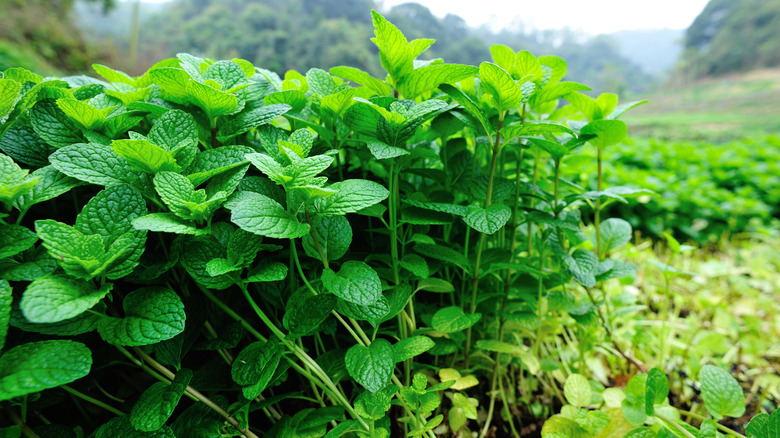How To Get Rid Of Mint Rust
We may receive a commission on purchases made from links.
When you grow mint (Mentha spp.) at home, you often get a vigorous crop with few concerns, but some disease issues leave you with questions — like, how do you get rid of mint rust? This fungal disease affects the fragrant perennial herb with changes to the leaves and distortion of new shoots. While there isn't a food-safe cure for mint rust on infected plants, there are ways to save the remaining crop before it succumbs to the problem.
What Is Mint Rust?
What Is Mint Rust?
Caused by the fungus Puccinia menthae, mint rust affects many varieties of mint plants, marjoram and savory. The fungus often infects the plants when the leaves are wet for extended periods. This can happen when you water the plants from overhead or water them later in the day without enough time for them to dry completely. Mint rust can spread to other mint plants in the area, so controlling the disease is crucial to protecting your crop.
Symptoms of Mint Rust
Symptoms of Mint Rust
Before you start treating your mint crop for mint rust, check the symptoms to make sure that's the cause. Mint is also susceptible to verticillium wilt and certain pest infestations, such as aphids and spider mites. These issues can all cause changes in the leaf color along with curling and dropping leaves.
Mint rust usually starts as raised, bright orange spots on the leaves and stems — and the spots typically look dusty. The spots often change to a dusty yellow color before turning black. You might notice that large sections of the leaf tissue start to die or that the leaves are falling off. New shoots that grow on your mint plants tend to be distorted and may have a pale color.
Get Rid of Mint Rust
Get Rid of Mint Rust
Once a plant is infected with mint rust, you can't save it. There are no effective fungicides for this problem that are safe for edible plants. However, you can save the rest of your mint crop if it hasn't yet been infected.
The best way to do this is by getting rid of anything in your garden that's infected. Once the spots turn black, the spores can contaminate the garden soil and damage other plants. Dig up and destroy the affected plants and rhizomes (the spreading network of underground stems) to prevent spreading the disease. Don't compost what you dig up; the spores can remain in the compost and infect future crops.
Protect Remaining Mint Plants
Protect Remaining Mint Plants
Mint plants that haven't been infected with mint rust can often be saved. If the soil has been contaminated, dig up the remaining healthy plants to move them to a different location. You can start them in another garden bed or use them in a container garden. If you keep the mint in the same area, get rid of mulch and any debris that was nearby.
Provide optimal care for the remaining mint plants to keep them strong and healthy. Use a soaker hose or water the plants at the base to prevent the leaves from getting wet. When you irrigate, do so in the morning to give the plants all day to dry if water splashes on the leaves. Adding fresh mulch can prevent potentially contaminated soil from splashing onto the mint leaves.
